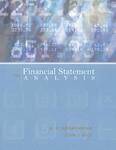Financial Statement Analysis : 10e édition
Subramanyam, K.R. / Wild, John
Éditeur : MCGRAW-HILL
ISBN papier: 9780073379432
Parution : 2008
Code produit : 1270976
Catégorisation :
Livres /
Gestion /
Finance /
Analyse financière
Formats disponibles
| Format | Qté. disp. | Prix* | Commander |
|---|---|---|---|
| Livre papier | En rupture de stock** |
Prix membre : 215,60 $ Prix non-membre : 226,95 $ |
*Les prix sont en dollars canadien. Taxes et frais de livraison en sus.
**Ce produits est en rupture de stock mais sera expédié dès qu'ils sera disponible.
Description
Financial Statement Analysis, 10e, emphasizes effective business analysis and decision making by analysts, investors, managers, and other stakeholders of the company. It continues to set the standard in showing students the keys to effective financial statement analysis. The textbook is set up in a three part framework which makes this textbook one of the best selling books in the market. It begins with an overview (chapters 1-2), followed by accounting analysis (chapters 3-6) and then financial analysis (chapters 7-12). The book presents a balanced view of analysis, including both equity and credit analysis, and both cash-based and earnings-based valuation models. The tenth edition is aimed at accounting and finance classes, and the professional audience – as it shows the relevance of financial statement analysis to all business decision makers. The authors: 1. Use numerous and timely “real world” examples and cases 2. Draw heavily on actual excerpts from financial reports and footnotes 3. Focus on analysis and interpretation of financial reports and their footnotes 4. Illustrate debt and equity valuation that uses results of financial statement analysis 5. Apply a concise and succinct writing style to make the material accessible























